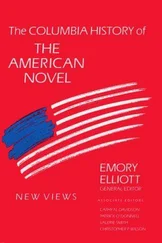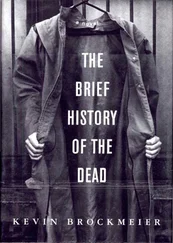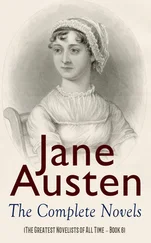This powerful instrument of virtue and happiness, after having been long despised, on account of the purposes to which it had been made subservient, has gradually become more justly appreciated, and more highly valued. Works of Fiction have been produced, abounding at once with the most interesting details, and the most sagacious reflections, and which differ from treatises of abstract philosophy only by the greater justness of their views, and the higher interest which they excite.
Dunlop's description of his project helps us to apprehend the broader purpose of his literary history: to sublimate the novel so as to produce a new disposition, or arrangement, of the pleasure of novel reading. With his title, which neither exiles all novels from culture in favor of drama, epic, sermons, or conduct books, nor favors the simple, uncritical acceptance of all novels into his narrative of the history of fiction, — 10- Dunlop announces that his history is to be "critical"-that is, it will judge works according to their quality so as to focus upon only "the most celebrated" prose fiction. What results, in both Reeve and Dunlop as well as in every subsequent literary history, is a chronological panorama, a certain spectacular sequential cinematography of culture in which selected cultural practices and productions are narrated as significant and valuable. By this means literary history (selectively) licenses (sublimated) pleasures. Through this literary history, novels produced in the market can be inserted into a (more or less) continuous narrative and turned toward higher cultural purposes: for example, serving as an expression of "the voice of the people" (Taine) or being part of "the Great Tradition" (Leavis).
Dunlop writes as though the culturally elevating role for fiction were already achieved. In fact, his own literary history is designed to promote that end. To argue the centrality of fiction to culture, Dunlop begins his introduction with an elaborate analogy between gardening and fiction making, which quickly implicates his own literary history. The analogy also indexes what we might call the necessary violence of literary history. Just as the «savage» has gathered, and placed around his dwelling, plants that please him, so too have men lived events "which are peculiarly grateful, and of which the narrative at once pleases himself, and excites in the minds of his hearers a kindred emotion." What are gathered are "unlooked-for occurrences, successful enterprise, or great and unexpected deliverance from signal danger and distress." A gardener learns that one must not just collect but also weed out the
useless or noxious, and [those] which weaken or impair the pure delight which he derives from others… the rose should no longer be placed beside the thistle, as in the wild, but that it should flourish in a clear, and sheltered, and romantic situation, where its sweets may be undiminished, and where its form can be contemplated without any attending circumstances of uneasiness or disgust. The collector of agreeable facts finds, in like manner, that the sympathy which they excite can be heightened by removing from their detail every thing that is not interesting, or which tends to weaken the principal emotion, which it is his intention to raise. He renders, in this way, the occurrences more unexpected, the enterprises more successful, the deliverance from danger and distress more wonderful.
The same process that describes the "fine arts" of gardening and fiction making-selecting, weeding, and intensifying with an eye toward -11- pleasure-applies also to the literary history Dunlop composes. Dunlop's «critical» history of fiction becomes an improving and enlightening cultivation of fiction for culture. By using the fiction of widely different epochs to survey the variety of cultural achievements, literary history makes novels more than instruments of private (kinky, obsessive) gratification. They are drawn into the larger tableau of cultural accomplishment-which Dunlop calls "the advance of the human mind"-until a certain disinterested moral and aesthetic pleasure appears to be the telos of all fiction making.
But the gardening metaphor insinuates certain assumptions into the project of this literary history. Literary history as cultivation spatializes time, so that the successive conflicts between the often antagonistic types of fiction written in England over the course of a century by, for example, Behn, Richardson, Fielding, and Radcliffe, are arranged to appear as one harmoniously balanced array of species that can be surveyed in one leisurely stroll, as one wanders through a garden. However, it proves as implausible to have a literary history without a literary historian as it is to have a garden without a gardener. It is the valuative role of the literary historian-the critic holding the scales over each text read-that produces the synchronic moment of judgment through which a narrative of the progress or history of romance, novel, and fiction can be grasped and told. Then, the way in which that story is told has a feedback effect: which writers are included and excluded, which are brought into the foreground, cast into the shade, or weeded away, determines what kinds of writing and authorship will come to count as «tradition» that grounds subsequent value judgments. This is the ironic terminus of a hegemonic literary history. Literary history can easily become tautological and self-confirming, a garden wall to protect specimens collected against the very factors it might have interpreted: history, change, difference.
A Vortex Mis-seen as an Origin
Once Dunlop's literary history gets under way, it becomes apparent that civilizing the novel requires a certain calculated violence. In a chapter entitled "Sketch of the Origin and Progress of the English Novel," Dunlop offers a typology of the elevated novel: novels are divided into the «serious» (Richardson, Sheridan, Godwin), the «comic» (Fielding, Smollett), and the «romantic» (Walpole, Reeve, Radcliffe). But before -12- offering this schematic overview of what we would now call the eighteenth-century novel, Dunlop does some weeding by giving cursory negative treatment to the novels of Behn, Manley, and the early Haywood. Behn's novels, we are informed, "have not escaped the moral contagion which infected the literature of that age." Though Dunlop merely alludes to "the objections which may be charged against many" of Behn's novels, he ends the passage describing the "faults in points of morals" of Behn's "imitator," Eliza Haywood, in this fashion: "Her male characters are in the highest degree licentious, and her females are as impassioned as the Saracen princesses in the Spanish romances of chivalry."
By orientalizing these early novels and by characterizing them as inappropriately erotic-too feminine, too European, and too immoral-Dunlop relegates to the margins of The The History of Fiction some of the most popular novels published in England between 1683 and 1730. How is the eclipse of an influential strain of popular fiction to be understood? Dunlop's dismissal of Behn, Manley, and Haywood from his history confirms a judgment that critics of the early amorous novel had been making since the 1730s. This negative judgment might be attributed to changes in sensibility, taste, or style, or to the idea that a certain formula has exhausted its appeal. But these words merely relabel rather than explain the cultural change we are trying to interpret. It is, no doubt, correct to argue that the novels of amorous intrigue are an integral expression of the culture of the Restoration, with the zeal of Charles II's court for sexual license, its eschewal of the dour asceticism of the Commonwealth, and its enthusiastic translation of French cultural forms. Such a historical placement of the early novel allows one to align its passing with the reaction, after 1688, against the excesses of the Restoration. Pleasures disowned become discomforting, and through embarrassment, a kind of unpleasure.
Читать дальше












